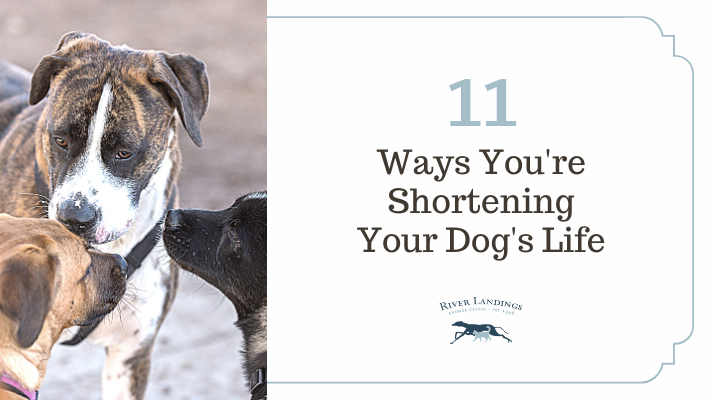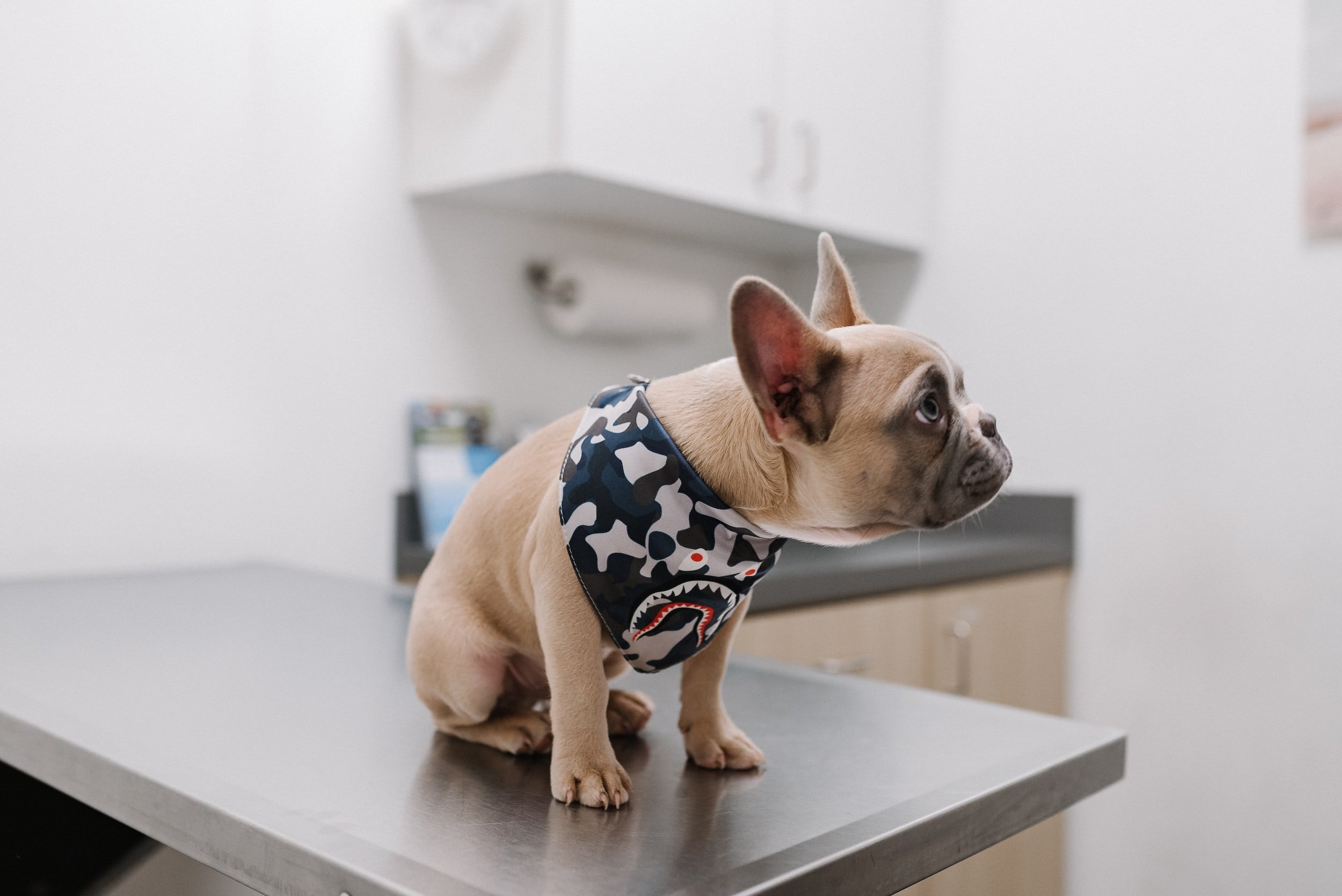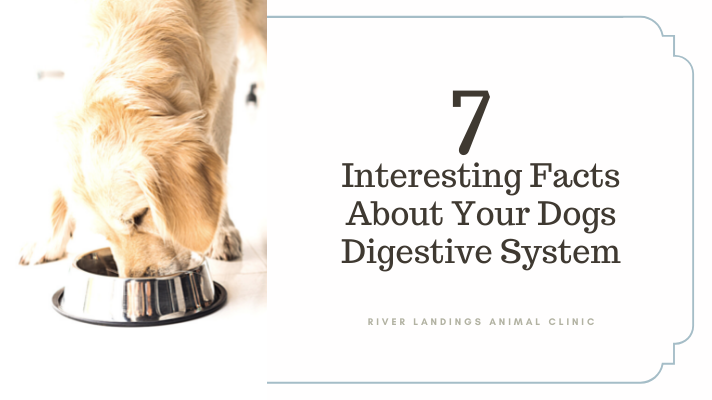As pet parents, we like to think that we are providing a healthy, happy life for our dogs. We feed them top quality food, give them lots of love, and toss the ball around the backyard whenever we have the time. But, there is a lot more that goes into raising a healthy pup. And sometimes, our busy lifestyles cause us to overlook some simple measures that could help to extend the lifespan of our canines.
The good news, however, is that all of this is repairable and it’s never too late to bump up the level of care that we put into raising our pets. So, just what could be shortening your pet’s life?
Letting your dog gain too much weight
According to the Association for Pet Obesity Prevention, an estimated 53 percent of dogs were overweight last year. In addition to that, the association found that 95 percent of the owners of these obese dogs incorrectly identified their pets as being at a normal weight. Letting your dog get too heavy can not only reduce their life span but also their quality of life. You may not realize this, but dogs do not process or break down food like we do.
For example, when a dog eats 1 ounce of cheddar cheese, it is equivalent in calories to a human eating 1.5 hamburgers or 3 chocolate bars. And it’s not just people food that presents the issue—some dogs are simply being fed too much dog food or treats. A simple way of remembering? Treat each treat like a candy bar. Would you give your child 8 candy bars a day? Hardly.
Solution: Limit the amount of people food you give to your pup and monitor their kibble intake. Don’t forget to increase your pets' exercise routines, even if that means getting creative. Can’t go outside? Put your pup on a leash and walk them around inside. It may sound silly, but anything to get them moving helps!
If the weight still isn't coming off, consult your veterinarian, as they may want to put your pet on a dietary program. Your vet may also be able to help identify an underlying disorder, like hyperadrenocorticism or hypothyroidism, that may be contributing to weight gain.
Neglecting canine dental care
Periodontal disease (gum disease), is a common problem in dogs. As the American Humane Society reports, veterinarians estimate that 85 percent of dogs over five years of age suffer from the condition, which develops after food and bacteria collect along the gum line and form plaque in a dog’s mouth. A build-up of oral bacteria can ultimately lead to all sorts of health problems for your pet, including heart valve problems and infections within the kidneys.
Solution: Grab a toothbrush and start scrubbing your dog’s teeth as often as you can.
Surprisingly enough, it's not that difficult to brush your dog's teeth—the finger brush works great. There are chew toys and bones that assist in reducing plaque, as well as water additives that help maintain oral health. It’s also a good idea to schedule a visit with your veterinarian for a professional cleaning session at least once each year.
Skipping annual check ups
While it may be a two-person-job to get your dog into the veterinarian on an annual basis, doing so may save their life. Simply getting your dog seen once or twice a year by a veterinarian can help improve life span, even for seemingly healthy dogs. Even if your dog is acting normally, something could be brewing inside. In some cases, by the time symptoms appear, there isn’t much we can do. But if we get treatment started early, that can help to improve a dog’s quality and quantity of life.
Solution: It is recommend taking your pup in for an annual or bi-annual physical (especially for dogs over the age of 7). If there have been underlying conditions in the past, pet parents should ask for yearly blood work to follow up on such ailments. It is ideal to keep pets up to date on vaccinations to protect them from rabies, canine distemper, parvovirus, adenovirus, parainfluenza, and bordatella.
Not providing daily exercise
Just because your pet played hard at the dog park on Monday doesn’t mean that you can forgo giving them any exercise until Thursday. Exercise not only helps to keep the weight off, it also provides mental stimulation for your pup. Keeping up your pet’s fitness routine gives them a healthy way to expel energy, engage their mind, and improve overall mood.
Solution: Find an activity you and your dog both enjoy and work it into your daily routine. As an added bonus, people who exercise with their pets tend to lose more weight themselves. If you don’t have time to drive to the dog park five days a week, mix up your routine. Take your dog on walks around the block (or in the house), toss the ball in the backyard, or play a game of hide-and-seek in your house.
Exposing your dog to second-hand smoke
Just like humans, canine lungs are not equipped to handle smoke being blown at them all day. Second-hand smoke can be extremely detrimental to pets, causing all sorts of ailments, such as an increased cancer risk and harmful respiratory issues.
Solution: Obviously the ideal way to tackle this situation is to abstain from smoking yourself. But if the habit is important to your lifestyle, then it’s a good idea to make sure that you do it away from your dog. Keep your dog in the house while you go outside on the patio to smoke.
Forgetting about heartworm and flea and tick prevention
These measures are just as important as remembering to keep up with your dog’s vaccinations. Flea, heartworm, and tick control is critical. Tiny critters spread diseases, some of which are life threatening. Fortunately there are many prevention options available from your veterinarian—from collars and topical spot-ons to oral medications.
Solution: For the safest and most promising approach, purchase only veterinary approved products and to follow the recommended dosage guidelines. Don't forget to set reminders in your calendar for when your pets are due for their next dose of preventive treatment.
Pushing certain breeds too hard
Small and toy dog breeds, as well as brachycephalic (short-nosed) breeds, have very different exercise requirements than other types of dogs. For instance, English Bulldogs, French Bulldogs, Pekingese, and Boxer types should not be exercised in extreme heat, as it can be life threatening to them.
Solution: Make sure to speak to your veterinarian about how much and what type of exercise is best for your breed. And if you feel like your dog is trying to tell you that you are overdoing the workout, listen to them. Symptoms such as excessive panting, dropping to the ground in the middle of a workout, or lethargic (weak and tired) tendencies mean that you should stop and let your dog rest immediately.
Feeding your dog table scraps
In addition to adding extra and unnecessary calories to your dog’s diet, pet parents risk inducing pancreatitis by feeding their dog fatty table scrap. Many foods that humans consume are extremely high in fats and sugars compared to what our pets should be exposed to. In addition, certain human foods—including garlic and chocolate—can be toxic to pets if consumed.
Solution: If you have a hard time saying no to those pleading eyes, offer your dog a healthy treat like baby carrots or apple slices. If your dog begs at the table, feed them their meal in another room while the family eats dinner to cut down on under-the-table handouts. Pet parents should also take a moment to familiarize themselves with what foods are considered dangerous for dogs.
Letting your dog outside unsupervised
Letting your dog roam free without you watching opens the door for a whole world of possible tragedies. Cars, coyotes or other predators, unscrupulous people—they're all out there. Don't let your dogs roam the streets unattended, even if they are tagged and microchipped.
Solution: Keep your dog on a leash at all times when walking outside. If you take your dog to the park, be a responsible pet parent and make sure to monitor their play sessions. If you notice a coyote or a potential predator, remove your dog from the situation immediately.
Not socializing your dog
Dogs who fail to get socialized don’t get the same “bite” out of life as their happy, socialized counterparts. They often develop anxiety and fear-related issues, even dermatologic issues, and they don't enjoy walks in the same way. Similarly a dog that has no human interaction, no fun, and no playtime can get depressed.
Solution: Take your puppy at a young age (once fully vaccinated and cleared by your veterinarian) to training classes and puppy meet-ups where they can get to know other dogs. Let your dog stop and greet other dogs while out on a walk or host other dogs in your yard for puppy play dates.
Not spaying or neutering
Forgoing spaying and neutering can be dangerous to your dog’s health. Spaying and neutering is still the best way to guarantee reducing the risk of several cancers, let alone the behavioral issues you can see with intact dogs.
Additionally, each heat cycle that a female dog goes through makes her more prone to the development of mammary cancer. Intact males are also more likely to develop prostatic diseases and testicular cancer than their neutered counterparts.
Solution: You can arrange to have a spay or neuter procedure done at your veterinary office. If cost is an issue, there are many clinics that offer low cost procedures; just call your local pet clinics and shelters to find out when they are having a special on the procedure. And as far as when to have the procedure done, there are different guidelines for different breeds. There have been many modifications made with regards to large breed dogs and when is the best time is. For this reason, you should discuss and plan the procedure out with your vet.
Hear From Us Again
Don't forget to subscribe to our email newsletter for more recipes, articles, and clinic updates delivered straight to your e-mail inbox.
Related Categories:













